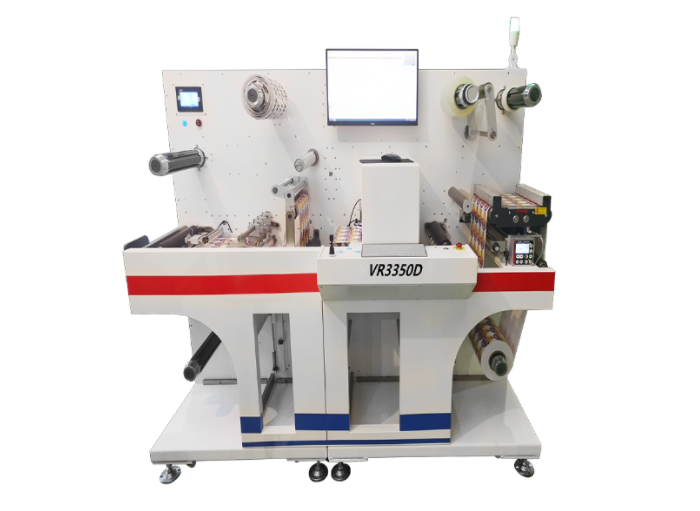What Is a Rotary Die Cutting Machine? Problems It Solves and Its Uses
In the world of manufacturing and product design, precision and efficiency are paramount. One of the key technologies that drive these attributes in various industries is the rotary die cutting machine. This versatile equipment plays a critical role in creating a wide range of products with high precision and speed. In this article, we will explore what a rotary die cutting machine is, the problems it solves, and its diverse applications.
Understanding Rotary Die Cutting Machines
A rotary die cutting machine is a type of industrial equipment used to cut, shape, and form materials into specific shapes and sizes. It operates by using a cylindrical die that rotates in sync with the material being fed through the machine. The die contains cutting edges or blades that cut through the material as it moves through the machine.
How Does It Work?
The process of rotary die cutting involves the following steps:
1. Material Feeding: The material (such as paper, plastic, foam, or metal) is fed into the machine.
2. Die Rotation: A cylindrical die, custom-designed for the specific shape or pattern, rotates in alignment with the material.
3. Cutting Action: As the material passes through the machine, the rotating die presses against it, cutting or embossing the desired shape.
4. Material Ejection: The cut or formed pieces are then ejected from the machine for further processing or packaging.
This continuous process is highly efficient, allowing for rapid production rates and consistent quality.
Problems Solved by Rotary Die Cutting Machines
Rotary die cutting machines address several challenges in the manufacturing and product design sectors. Here are some key problems they solve:
1. High Precision and Accuracy
One of the main advantages of rotary die cutting is its ability to produce highly precise and accurate cuts. This is particularly important in industries where even the smallest deviation can lead to product defects or performance issues. The precision of rotary die cutting ensures that each piece is cut to exact specifications, reducing waste and improving product quality.
2. Speed and Efficiency
Rotary die cutting machines are known for their speed and efficiency. The continuous motion of the die and the material allows for rapid production rates. This capability is essential for high-volume manufacturing environments where time is money. By streamlining the cutting process, these machines help companies meet tight production schedules and demand.
3. Versatility in Material Handling
These machines can handle a wide range of materials, from thin films and paper to thicker materials like rubber, foam, and even metals. This versatility makes rotary die cutting machines suitable for various applications across different industries. Whether it’s creating intricate labels, cutting gaskets, or forming metal components, these machines can handle the job with ease.
Further reading:
What Are Digital Label Printers?
4. Cost-Effectiveness
Top Stainless Beer Fermenter Picks for 2024
Benefits of Variable Speed Compressor Heat Pumps for Efficient Home Heating
How Does a Membrane Filter Press Work?
Key Factors in Choosing Laser Cutting Machine Accessories
How Can a 100 BBL Brewery Optimize Production Efficiency and Quality?
Are You Struggling with Inconsistent Bread Shapes and Sizes?
By automating the cutting process and minimizing material waste, rotary die cutting machines can significantly reduce manufacturing costs. The ability to produce large quantities of parts quickly and accurately also lowers labor costs and increases overall operational efficiency.
5. Customization Capabilities
Rotary die cutting machines can be equipped with custom-designed dies to produce specific shapes, patterns, or features. This capability is particularly beneficial for industries that require bespoke designs or components. From complex shapes to detailed embossing, these machines offer a high level of customization.
Uses of Rotary Die Cutting Machines
Rotary die cutting machines are employed in a variety of industries, each leveraging the technology for different purposes. Some of the common applications include:
1. Packaging Industry
In the packaging industry, rotary die cutting machines are used to create custom shapes and designs for packaging materials. This includes everything from cardboard boxes to flexible packaging and labels. The precision and speed of these machines ensure that packaging is both functional and aesthetically pleasing.
2. Medical and Healthcare
The medical and healthcare sector utilizes rotary die cutting for producing components like medical tapes, wound care products, and diagnostic devices. The ability to cut complex shapes with high precision is crucial in this industry, where product quality and performance are critical.
3. Automotive Industry
In the automotive industry, rotary die cutting machines are used to create gaskets, seals, and other components that require precise cutting and shaping. These parts are essential for ensuring the safety and performance of vehicles.
4. Electronics and Technology
For the electronics and technology sectors, rotary die cutting is used to produce components like insulation materials, EMI shielding, and adhesive parts. The machines can handle the delicate and intricate cuts required for these high-tech applications.
5. Consumer Goods
From stickers and labels to decorative elements and wearable tech components, rotary die cutting machines are integral to the production of various consumer goods. The flexibility and efficiency of these machines make them ideal for producing high-volume consumer products with consistent quality.
Conclusion
Rotary die cutting machines are indispensable in modern manufacturing, offering precision, speed, versatility, and cost-effectiveness. Whether used in the packaging industry, healthcare, automotive, electronics, or consumer goods, these machines streamline production and enhance product quality. For businesses looking to improve their manufacturing processes or explore custom cutting solutions, partnering with a reliable supplier of rotary die cutting machines is crucial. To learn more or to find a trusted supplier, please contact us for more information.
Key Considerations for Selecting Industrial Heat Exchangers
Top 5 Benefits of 2 Stage Screw Air Compressors for Exporters
Enhancing Heat Transfer: Finned Tube Applications Explained
Maximize Profits with a 50TPD-100TPD Wheat Flour Plant
Top Bakery Cutting Machines: Boost Efficiency & Slice Costs!
What Should You Consider When Buying Air Compressors?
How Can Sorghum Flour Milling Improve Your Production Efficiency?
Previous
Next
None
Related Articles
If you are interested in sending in a Guest Blogger Submission,welcome to write for us!







Comments
0